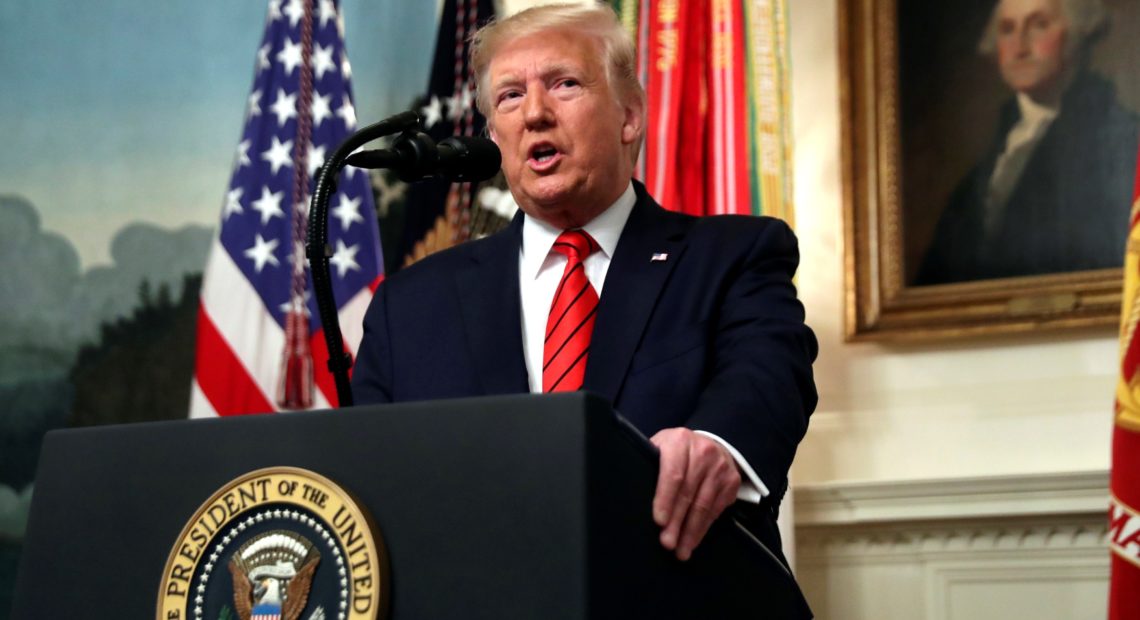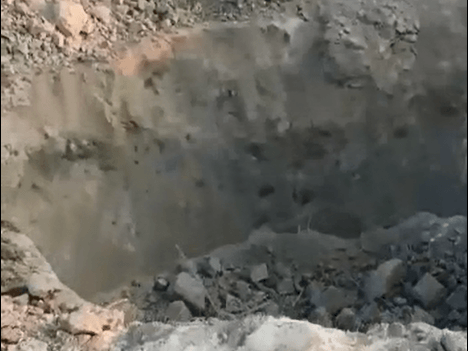
President Trump Says Islamic State Leader Was Killed In Special Operations Raid
BY JAMES DOUBEK & BOBBY ALLYN
President Trump says that Abu Bakr al-Baghdadi, the founder and leader of the Islamic State, has been killed after a U.S. special operations mission targeted him in northwest Syria. Trump declared that U.S. forces have brought “the world’s No. 1 terrorist leader to justice.”
In a dangerous and daring nighttime raid in “grand style,” Trump said Sunday, Baghdadi died after U.S forces blew a hole in a wall of his compound and cornered him in Idlib province in northwest Syria along the border with Turkey.
Baghdadi, who was with his three young children, detonated a suicide vest, killing himself and his children, Trump said.
Before his death, Trump said, Baghdadi was “whimpering and crying and screaming all the way.”
Can’t see the video? Click here.
Trump said no U.S. troops were killed or injured in the raid. The president noted that 11 children were rescued from the compound and an undisclosed number of al-Baghdadi’s associates surrendered.
“The United States has been searching for al-Baghdadi for many years. Capturing or killing al-Baghdadi has been the top national security priority of my administration,” Trump said on Sunday morning.
“He was a sick and depraved man, and now he’s gone,” said Trump in remarks
The Syrian Observatory for Human Rights, a war-monitoring group, says U.S. forces attacked ISIS targets overnight in northwest Syria, leaving at least nine people dead.
On Saturday evening, Trump hinted that the announcement was coming, tweeting: “Something very big has just happened!”
The White Helmets, a group of volunteer rescue workers who have operated in the Syrian civil war, provided NPR with a video of what the group says was the site of the attack, including rubble surrounding what appears to be a large bomb crater.
A rescue worker told NPR that about 10 bodies were recovered from the site.

A video provided by Syria’s White Helmets volunteers shows a crater where the attack took place.
CREDIT: White Helmets/Screenshot by NPR
The Syrian Observatory says eight helicopters and a warplane belonging to U.S.-led coalition forces fighting ISIS struck an area north of the Syrian city of Idlib, close to the border with Turkey. Heavy strikes targeted ISIS positions for about two hours, with militants firing back at helicopters. The group says many people were wounded in the attack.
A White Helmets official told NPR that a two-story building was targeted in the strike. In the video, the site appears fairly isolated, surrounded by a grove of trees, a few homes and desert mountains.
Mazloum Abdi, the commander of the Kurdish-led Syrian Democratic Forces, said in an earlier tweet that there was a “Successful& historical operation due to a joint intelligence work with the United States of America.” The Syrian Democratic Forces have been an important ally to U.S. forces fighting ISIS.
Baghdadi had been reported killed several times before, including in announcements by Iraq and Russia. He was believed to have been hiding in the desert near the Syria-Iraq border.
His last apparent video appearance was in April, a month after U.S.-backed forces declared the end of the ISIS “caliphate” and the defeat of the last remaining territory the group held in the Syrian city of Baghouz.
Baghdadi’s actual powers of command and control had been greatly diminished since the U.S. and coalition forces routed ISIS from its hold on large swaths of territory in Iraq and Syria, though he had remained symbolically powerful.
At the Kurdish-run al-Hol camp in northeastern Syria a few months ago, some of the Iraqi and Syrian wives of ISIS fighters told NPR that they were waiting for Baghdadi to reappear and were confident he would revive the caliphate.
Declaring an “Islamic State”
Baghdadi’s most notable public appearance came five years ago, near the height of ISIS’ power in Iraq and Syria. He spoke at the Great Mosque of al-Nuri in Mosul, Iraq, in July 2014, declaring himself caliph of the new Islamic State.
At its height, ISIS ruled over 8 million people in territory the size of Great Britain, with its capital in Raqqa, Syria.
The group rose to prominence for its gruesome violence, releasing videos of beheadings and burning people alive. It publicly beheaded, crucified and threw people off buildings. The group forced thousands of women and children from Iraq’s Yazidi minority into slavery amid an ISIS campaign of genocide against the group. Yazidi women and girls were kept as sex slaves for years.
It attracted tens of thousands of foreigners, many from the West, and inspired terrorist groups around the globe. The group even established a quasi-government, with administrative functions, courts and police.
U.S. forces declared an end to ISIS’ self-declared caliphate in March. But experts fear the group’s resurgence now that Trump has announced a pullout of U.S. forces from Syria, with dozens of ISIS fighters escaping from Kurdish custody in the last month.















